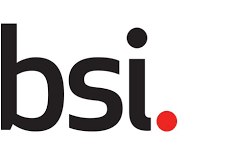Please be advised that a New Work Item Proposal has been loaded to the BSI Standards Development Portal for comment.
Any comments received will be submitted to the national committee AMT/10 “Robotics” for consideration when deciding the UK response to the associated Standards Development Organisation.
Proposal: Robotics — Modularity for service robots — Part 402: Modules for exoskeleton robots
Please visit: ISO/NP 22166-402
Comment period end date: 09/05/2024
Scope
This document complies with the ISO 22166-1, ISO 22166-201 and FDIS 22166-202 family standards providing requirements and guidelines on specifications on modularity for service robots focusing on robot application sectors; and in this context the document presents requirements and guidelines for modularity of physical assistant robots (or wearable exoskeletons).
The document is targeted at the following user groups:
— modular exoskeleton robot framework developers who specify performance frameworks in an unambiguous way;
— exoskeleton module designers and/or manufacturers who supply end users or exoskeleton system integrators;
— exoskeleton robot integrators who choose applicable modules for building a modular exoskeleton system.
This document includes guidelines on how to apply existing safety and security standards to exoskeleton robot modules.
This document is not a safety standard.
This document applies specifically to wearable exoskeleton robots, although the modularity principles presented in this document can be utilized by framework developers, module manufacturers, and module integrators from other fields not necessarily restricted to robotics.
Purpose
This document provides requirements and guidelines for exoskeleton modules to achieve the following:
– Enable efficient data exchange between exoskeleton (EXO) modules,
– Efficient connections between physical interfaces for EXO hardware,
– Easy integration of EXO modules without any extra effort for interactions among modules,
– Allow EXO module designers and manufacturers to define and use functions of modules for achieving their own characteristics for service robot modules,
– Provide EXO module users with appropriate modules depending on functions of a target exoskeleton users.
For the active utilization of exoskeleton modules and effective expansion of exoskeleton robot market. The output of the document will accelerate the expansion of the exoskeleton hardware market as well as exoskeleton application services. In addition, developers, designers, and manufactures of exoskeletons can utilize various types of EXO modules with ease and at lower cost and provide exoskeletons more suitable for end users.
If you have any comment or need more information, please contact Sami Ortiz at [email protected]

